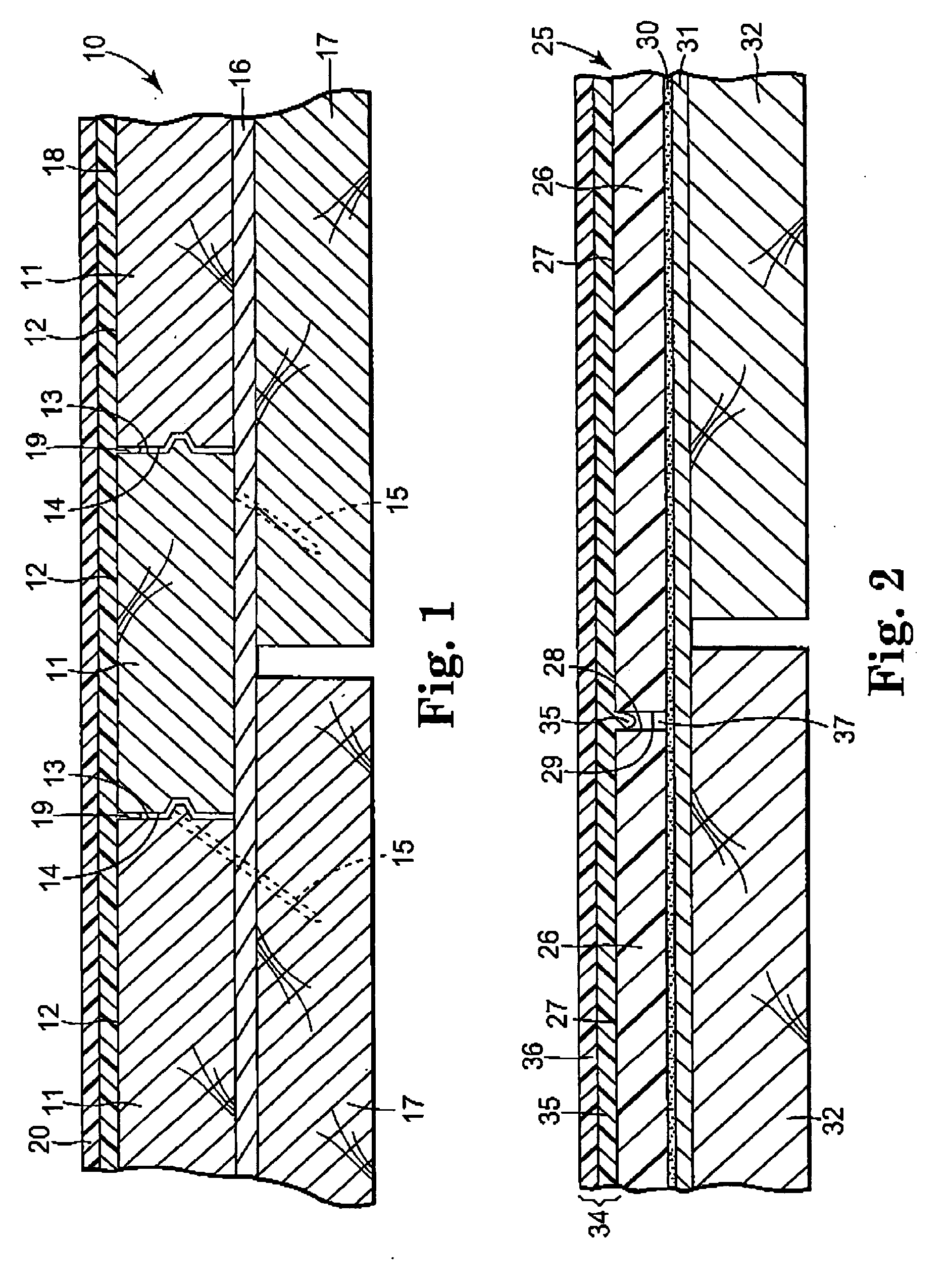Polyurethane coating cure enhancement using zirconium carbonate
- Summary
- Abstract
- Description
- Claims
- Application Information
AI Technical Summary
Benefits of technology
Problems solved by technology
Method used
Image
Examples
example 1
[0060] Varying amounts of PEKONIL™ PZC potassium zirconium carbonate (commercially available from Clariant as a solution containing about 48-52% solids or approximately 20 wt. % equivalent zirconium oxide, identified below as “KZrC”) were evaluated in the topcoat of a multilayer floor finish system. The undercoat was formed using a single layer of unmodified PADLOCK floor finish applied as described above in the section entitled Undercoat Formulations and Coating Method. The topcoat was formed using Topcoat No. 1, and applied as described above in the section entitled Topcoat Formulations and Coating Method. The weight percent initiator in the topcoat (based on a comparison of the liquid initiator weight to the liquid topcoat weight), polyurethane topcoat pot life, viscosity at the start of coating, tack-free times and initial gloss levels were determined as described above. The results are shown below in Table 1.
TABLE 1ResultsTopcoatWt. %InitialTack-InitiatorTopcoatTopcoatFreeRun...
example 2
[0062] Using the method of Example 1. varying amounts of potassium zirconium carbonate were added to a topcoat (Topcoat No. 7) prepared from the ingredients set out below in Table B. Part A and Part B were mixed vigorously for three minutes The topcoat initiator was next premixed with 2.73 parts deionized water and added to the mixture of Part A and Part B, following by mixing for a further 30 seconds to one minute.
TABLE BParts byIngredientweightPart APolyester polyol(1)31.23Ammonia0.07Defoamer(2)0.57Deionized water10.63Dipropyleneglycol dimethyl ether3.54Defoamer emulsion(3)0.43Silicone defoamer(4)0.34Surface agent(5)0.82Wetting agent(6)0.01Silicone defoamer(7)0.01Deionized water43.45Polyester polyol(8)8.89Part BHexamethylene diisocyanate(9)100Mix RatiosPart A69.65Part B23.53
(1)W2K ™ 2002, U.S. Polymers, Inc.
(2)DEEFO ™ PI-4, Ultra Additives, Inc.
(3)FOAMEX ™ 822, Tego Chemie.
(4)BYK ™ -346, BYK Chemie.
(5)BYK ™ -380, BYK Chemie.
(6)BYK ™ -348, BYK Chemie.
(7)BYK ™ -025, BYK Chem...
example 3
[0065] PEKONIL PZC potassium zirconium carbonate was added in varying amounts to PADLOCK floor finish, coated in two layers on cleaned tiles with air drying between layers, then overcoated with Topcoat No. 1. The initiator amounts (based on the weight of metal oxide equivalent to the total undercoat solution weight), topcoat tack-free times and 20° gloss values are shown below in Table 3, along with results for a similar multilayer finish made by adding 2% (based on the equivalent weight of zinc oxide) of zinc tetraa ine carbonate (15% zinc (as ZnO), CAS 38714-47-5, low pH version containing about 12-16% ammonia, commercially available from CheinCor and identified by the manufacturer as “zinc ammonium carbonate” and identified below as “ZTC”) to Undercoat No. 1.
TABLE 3InitiatorTack-FreeCone. IntimeRun No.InitiatorUndercoat, %(hours:min)20° Gloss3-1None0.08:20813-2KZrC0.78:20813-3KZrC1.36:40813-4KZrC2.05:20843-5KZrC2.75:10793-6KZrC3.35:10823-7KZrC4.04:10813-8ZTC2.04:4081
[0066] The ...
PUM
| Property | Measurement | Unit |
|---|---|---|
| Fraction | aaaaa | aaaaa |
| Fraction | aaaaa | aaaaa |
| Fraction | aaaaa | aaaaa |
Abstract
Description
Claims
Application Information
 Login to View More
Login to View More - R&D
- Intellectual Property
- Life Sciences
- Materials
- Tech Scout
- Unparalleled Data Quality
- Higher Quality Content
- 60% Fewer Hallucinations
Browse by: Latest US Patents, China's latest patents, Technical Efficacy Thesaurus, Application Domain, Technology Topic, Popular Technical Reports.
© 2025 PatSnap. All rights reserved.Legal|Privacy policy|Modern Slavery Act Transparency Statement|Sitemap|About US| Contact US: help@patsnap.com


